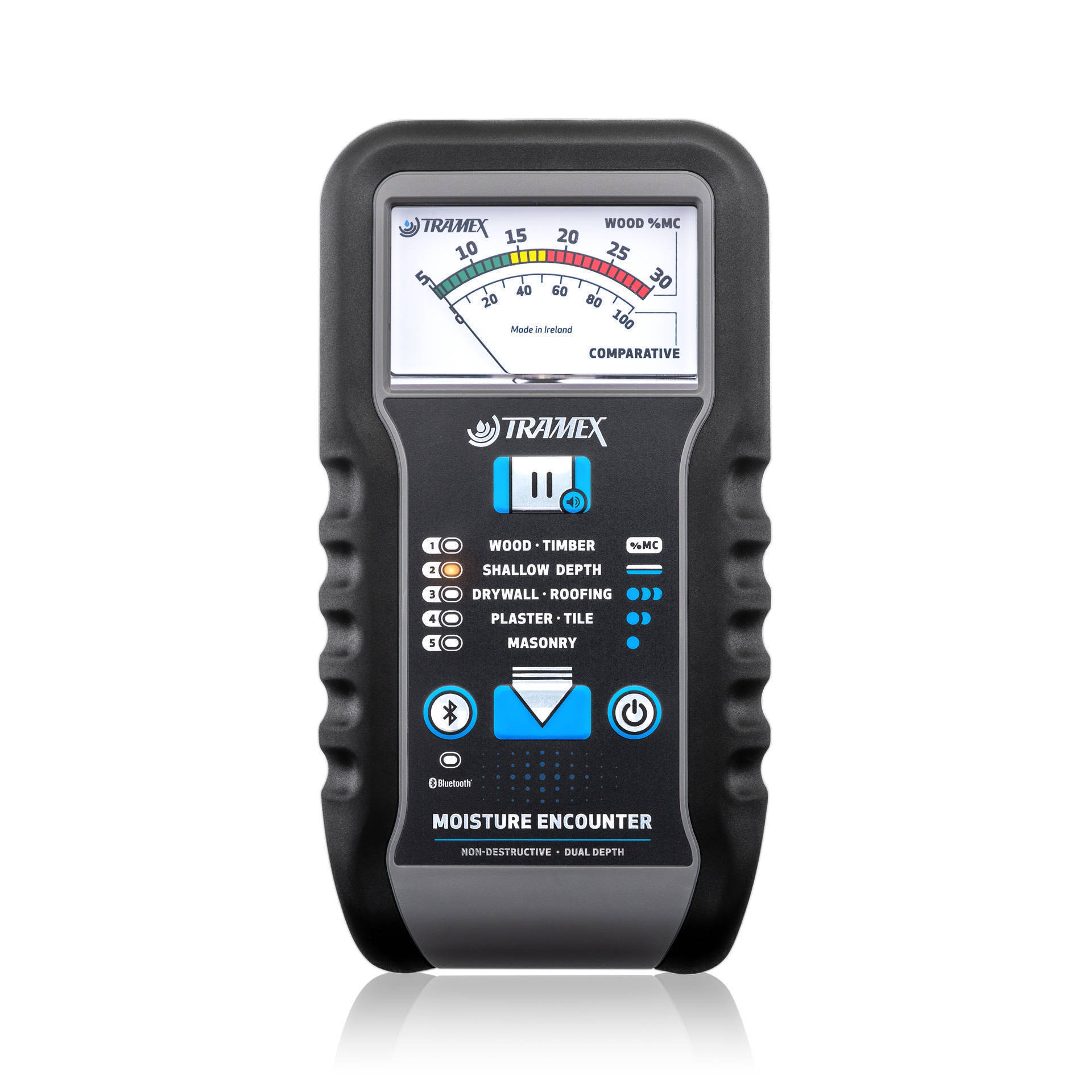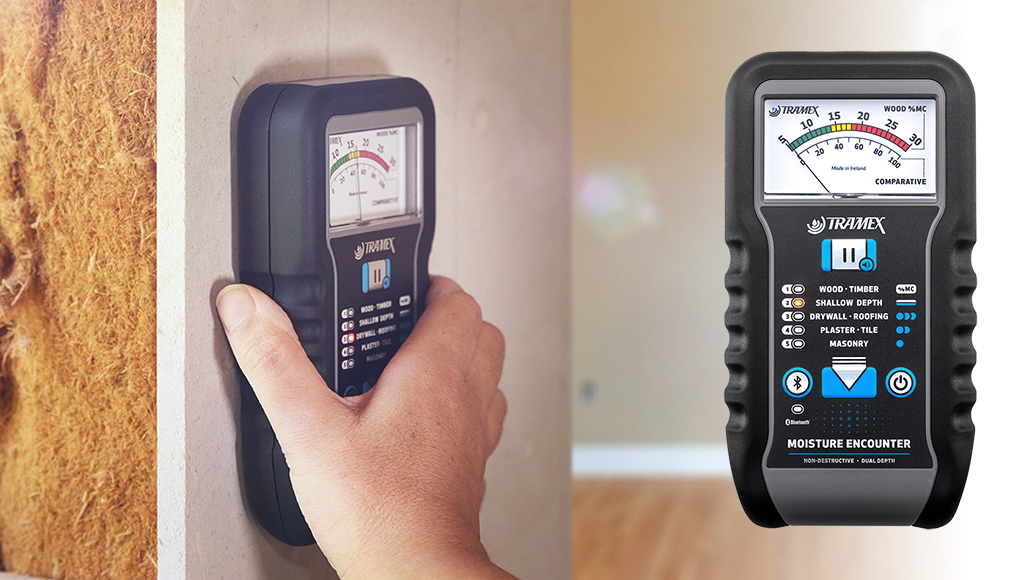Exactly how to Use a Moisture Meter to Spot Hidden Water Damages in Your Building
Explore the Globe of Moisture Meters: Every Little Thing You Required to Know
In the world of moisture meters exists a globe of accuracy and usefulness that often goes undetected. These tools, while relatively simple, hold a riches of details that can significantly influence different sectors and applications. Recognizing just how moisture meters run, the different kinds available, and their diverse uses can shed light on their relevance in making sure top quality and performance. By discovering the intricacies of moisture meters, one can discover an important device that goes beyond plain measurement, supplying understandings that can make a considerable distinction in numerous areas.
Just How Moisture Meters Job
Dampness meters operate by measuring the electric conductivity or capacitance of materials to identify the moisture web content existing - Moisture Meter. These meters are invaluable devices throughout various sectors, consisting of construction, farming, and woodworking. By utilizing different approaches such as pinless or pin-type innovation, wetness meters give precise analyses that help experts make informed choices
Pin-type moisture meters function by putting the sharp pins right into the material being evaluated. On the other hand, pinless dampness meters use electro-magnetic signals to scan a larger location without creating any damages to the material's surface.
No matter of the approach utilized, dampness meters play a vital function in avoiding problems such as mold and mildew development, architectural damage, or product problems triggered by excess moisture. Comprehending how these meters job is necessary for ensuring the high quality and integrity of products in different applications.
Sorts Of Wetness Meters
Provided the critical duty dampness meters play in different industries, it is important to comprehend the different kinds readily available to professionals for accurately examining wetness degrees. There are largely two major sorts of dampness meters: pin-type and pinless dampness meters.
Pin-type wetness meters make use of two pins that are placed right into the material being tested to gauge the electric resistance in between them. This approach is commonly used for timber, drywall, and various other building products. Pin-type meters offer precise analyses at specific depths, making them excellent for determining moisture slopes.
On the other hand, pinless dampness meters use electromagnetic sensing unit plates to check a larger area of the product without creating any damages. This kind is appropriate for swiftly scanning large locations and is frequently used for flooring, wall surfaces, and ceilings. Pinless meters are practical for taking analyses on completed surface areas without leaving any kind of noticeable marks.
Both types of dampness meters have their benefits and are chosen based on the specific demands of the job at hand. Understanding the differences between these kinds is vital for specialists to make accurate wetness assessments.
Applications Throughout Industries
Construction experts count on moisture meters to evaluate the dampness levels in building products like concrete, wood, and drywall, which is essential for maintaining architectural stability and stopping issues like rot or mold. The floor covering sector utilizes dampness meters to determine the wetness Clicking Here content in subfloors before mounting various floor coverings, stopping pricey problems due to excess dampness. In the food market, wetness meters are used to monitor and manage moisture degrees in products such as grains, nuts, and dried out fruits to preserve freshness and high quality.
Tips for Using Wetness Meters
Use the moisture meter's calibration settings to guarantee exact readings when measuring the wetness web content in numerous products. Furthermore, make certain the meter is set to the appropriate dampness array for the product you are gauging to acquire the most precise results.

When using a pin-type dampness meter, place the pins to the proper depth advised for the material being examined. This ensures that the dampness readings are drawn from the right depth within the material, supplying a more accurate representation of its dampness content. For pinless wetness meters, remember to preserve appropriate contact with the product's surface area to get dependable readings.

On a regular basis check and replace the batteries in your wetness meter to avoid inaccurate readings due to low power. Store the meter in a dry and secure place when not being used to lengthen its life-span and maintain its precision. By complying with these pointers, you can make the most of the efficiency of your wetness meter and pop over to these guys obtain exact dampness web content dimensions across different materials.

Upkeep and Calibration
To guarantee the precision of wetness web content dimensions, regular upkeep and calibration of the wetness meter are important actions in its proper functioning. Calibration adjusts the wetness meter to guarantee that it gives consistent and reputable outcomes.
Calibration should be done occasionally, specifically if the moisture meter is made use of frequently or in vital applications where specific measurements are called for. Many moisture meters come with calibration tools or can be calibrated by expert services - Moisture Meter. It is advised to maintain a log of calibration days and results to track the efficiency of the wetness meter over time. By maintaining and adjusting the moisture meter frequently, users can trust the precision of the wetness web content measurements obtained.
Final Thought
Finally, dampness meters play a vital duty in numerous industries by accurately gauging the dampness material of products. Understanding exactly how these devices function, the various kinds readily available, and appropriate maintenance and calibration are important for getting trusted outcomes. Whether in building, manufacturing, or farming, the use of wetness meters aids make certain top quality control and performance in processes.
Building and construction professionals depend on moisture meters to examine the dampness degrees in structure materials like wood, concrete, and drywall, which is critical for keeping architectural integrity and protecting against problems like rot or mold and mildew. The floor covering sector utilizes wetness meters to measure the wetness web content in great post to read subfloors before mounting various floor coverings, avoiding expensive problems due to excess wetness.Utilize the dampness meter's calibration settings to guarantee precise readings when gauging the moisture web content in various materials. By complying with these ideas, you can make best use of the efficiency of your wetness meter and acquire precise moisture content measurements throughout various products.
In verdict, wetness meters play a vital function in different industries by precisely gauging the dampness material of products.